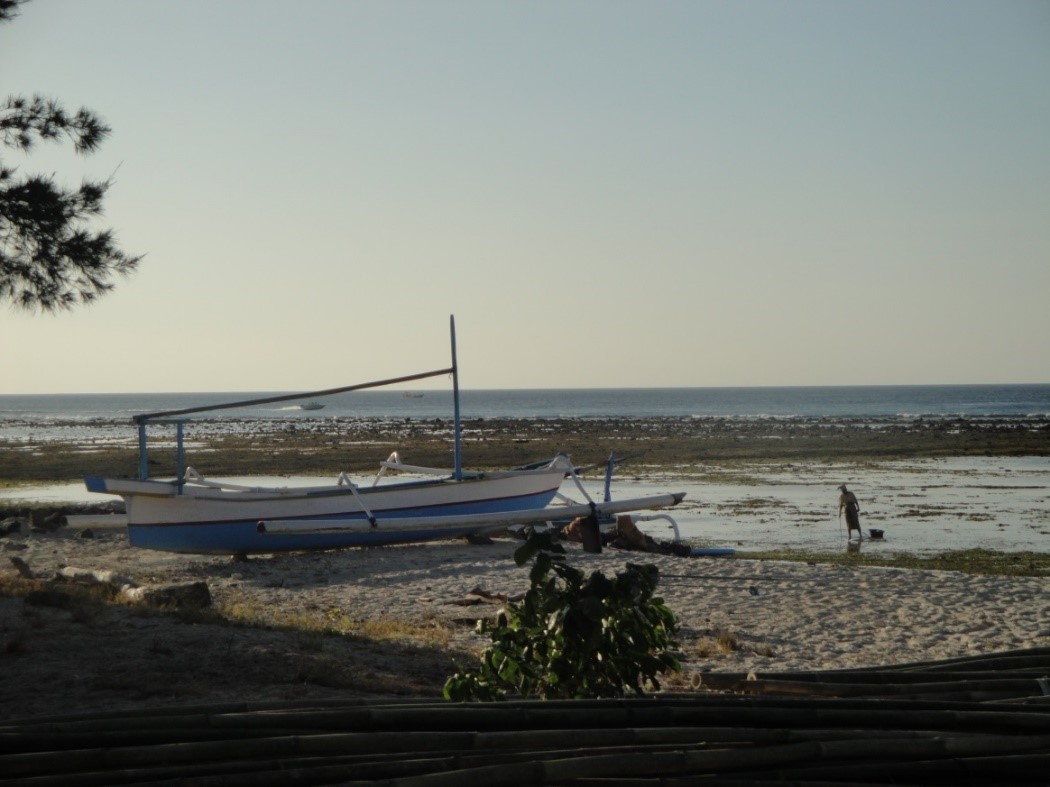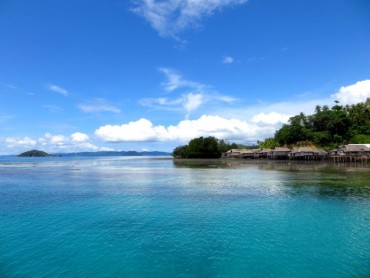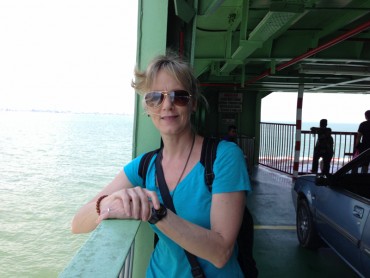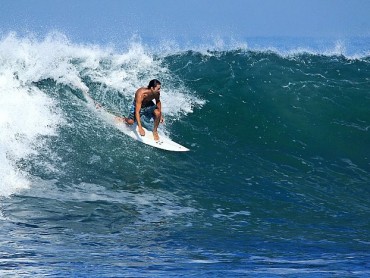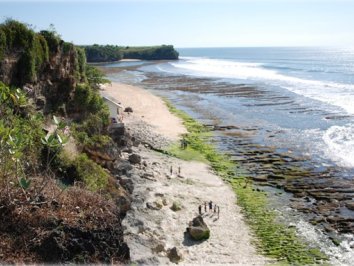I never really imagine, how travelers go on trip with backpack luggage only. How they organize all their stuff for 1 month or more in only one pack of maximum 60 liters of volume. After my first backpack trip in Indonesia, I realized how liberating this is.
Our planning starts with packing of some pairs of shorts, T-shirts, long sleeves, swim-wear and some basic medicine repellents, hygienic accessories and some candies and sweets for Indonesian children. The most important part of our backpack was lonely planet book of Indonesia – A “Bible” for travelers.
Our month trip in Indonesia started with stop on the Indonesian most popular island Bali, where we decided to spent some time in the beginning, to accommodate in new cultural environment and rest a bit before moving to more dynamic part of traveling. Stopping in the most attractive destinations, for us is not the most preferable thing, but we visited Bali only for one reason – to see spiritual city Ubud. Ubud is nice small “monkey” town, where we saw some famous tribal dances, Indonesian handcrafts, Ubud’s world known rice terraces and typical lotus flowers.
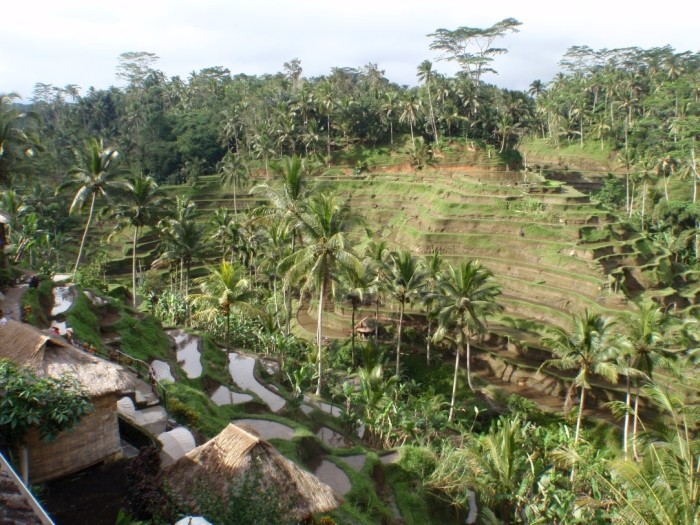
Rice Terrace in Ubud, Bali
We continued our trip to island Gili, the smallest Gili out of 3 Gili’s, called Meno, where we spent 3 days enjoying sandy beaches and amazing sunsets.
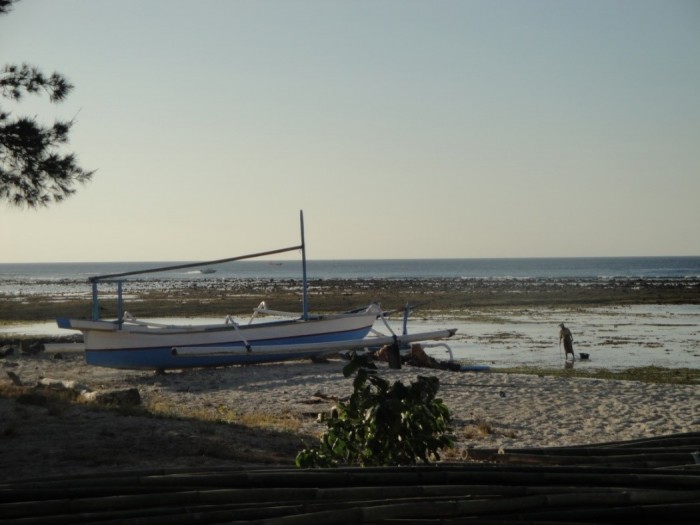
Gili Meno
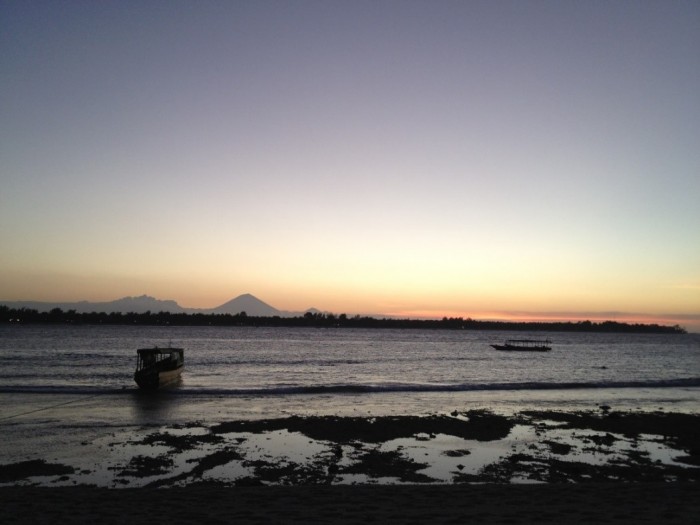
Sunset on Gili Meno, Bali
After first week in Bali, we took a flight to Sulawesi Island, from airport in Denpasar (Bali) to Makassar (Sulawesi). We were lucky, as Bali’s airport is having daily flights to almost all islands in Indonesia and therefore is the best start point for planning your trip in Indonesia.
Sulawesi Island looks very attractive on the map, especially because its shape is similar to an orchid. In real, island offers full of adventure surprises, cultural and landscape diversity.
After 2,5 hours we landed to Makassar and we immediately found a ride to bus station as we were intended to go directly on first possible ride to the north, as we were looking forward to save our time that we were be able to visit as much attraction as possible. When you are backpacking, you need to plan some extra days in advance for “just in case” surprises.
We were driving over the night in interior of the island, through mountain cordilleras covered with jungles, where you can felt wild life in it, all way to next city – Rantepao, Tana Toraja.
Tana Toraja is the Sulawesi heritage city, most known by funeral ceremonies in which buffaloes are sacrificed for mummified person, before it can be buried. Life in Tana Toraja revolves around death and Christian church, which is not really usual in other parts of Indonesia, as well as in Sulawesi Island, where religion in majority is Muslim.

Elaborately painted houses with boat-shaped roofs and terraced rice paddies where farmers are working.Farmers are paid with rice – 1 bag of rice for daily work.
We accommodate ourselves for 3 days in a small quite guest house (with cute name: “Peggy’s guest-house”), where was little restaurant offering the local specialties, like fish cooked with lemon grass inside bamboo stick and balok (palm wine) or homemade oatmeal for breakfast.
We spent days in Tana Toraja driving around with rented scooter, visiting one ceremony, as in July/August months they prepared some really big ceremonies where 6-10 buffalos are slaughtered. Event was not really nice to see, as for us this kind of burial is a quite primitive way.
In our hostel recommended to take local guide men, who droves us to this ceremony place, which was in the middle of some field, covered with some tribunes, where the important relatives and their families were watching this procedure. Local guide men warned us earlier before, that we should buy some boxes of cigarettes as a gift to relatives of deceased person.
At the end, we left the ceremony already before its end, as we had enough blood scenes of poor animals.
We decided to spend our time that left, rather driving around and visit a highest Rantepao peak, from where you can see a whole valley of beautiful rice terraces.
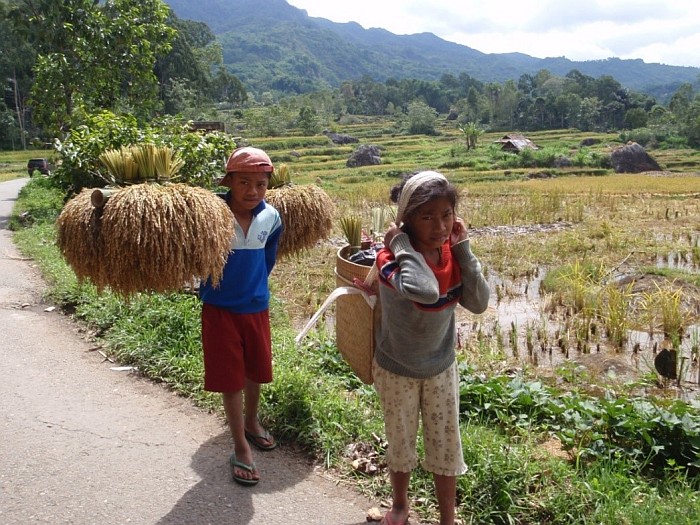
Children’s working on rice terraces – amazing picture, I will never forgot.
And we continued to the north to our final “Sulawesi goal” – Togian Islands. We landed in city Ampana for one night, to accommodate our self after adventures driving through local high hills, dusty and missing roads (“literally”), without food all day long because of Ramadan (period of post in Muslim religion), which is valid also for local bus drivers (no stops or break in 8-9 hours of traveling in van). We was fascinated about sunset in this place, sun was almost burning.
Next day we were shipped to Togian Island, called Poyalisa, small Private Island with 10 bungalows and main bungalow with kitchen and staff place. Poyalisa was amazing experience, how to live on paradise island with kitchen staff and tourists divided in those bungalows for couple of days. This place offers whole package – bungalow, all day food treatment, snorkeling & mangroves trips.
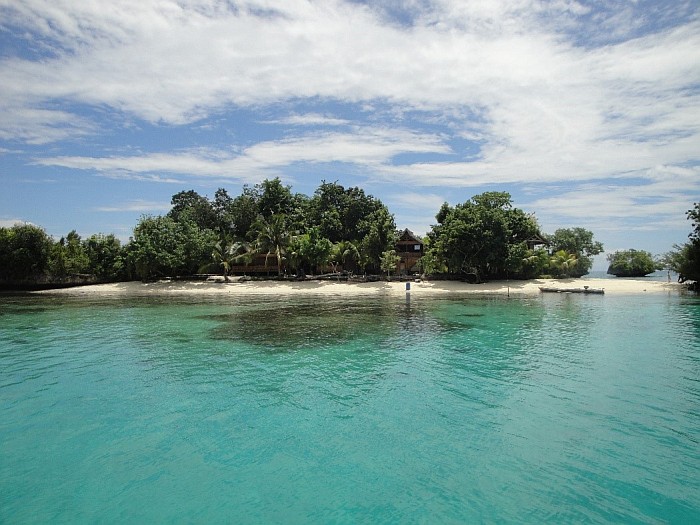
Poyalisa – Togians
We spent there 4 nights after moving to other island (which was initially planned for 4-5 nights), we decided to return to Poyalisa after 1st night on other island. Poyalisa has so good atmosphere and stuff there was so nice and welcomed. After our return, bungalows were completely full, therefore we asked to oversleep in small room next to kitchen utility. This decision turned out as great opportunity to get closed with local people even more. We become part of the kitchen stuff, view inside kitchen and help with serving lunch and dinners. This was really funny experience. After living 2 days in the kitchen, we were moved to best bungalow there, on the top of cliff with amazing view on the sea. First day in bungalow, we cooked our Slovenian coffee, which we brought from Slovenia as a gift, and invited all “new friends” on our terrace enjoying breathtaking sunset.
We visited also Bajo people, living in Togian islands as independent domestic people – gypsy people, without spring water, electricity or any other “modern” infrastructure.
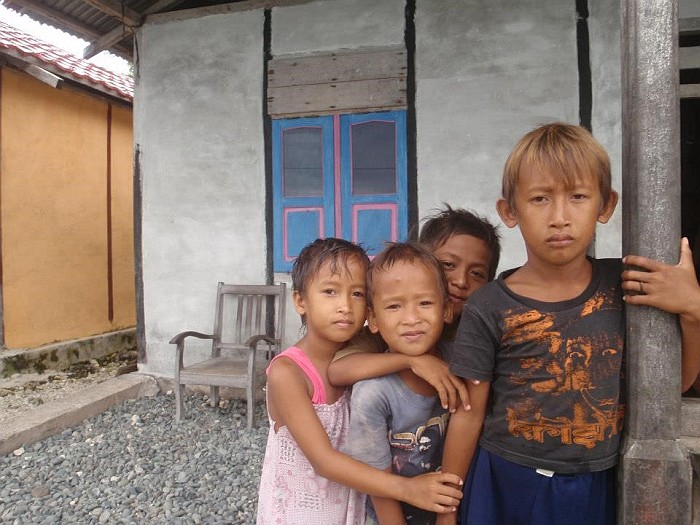
Bajo people
Our last stop was Jakarta, capital town, where city pulse is not so much different from all other capitals in the world, except food and people – This is what Indonesia is giving. Unexpected great trip with a lot of kindness, simple and nice people, who are carrying joy and happiness.
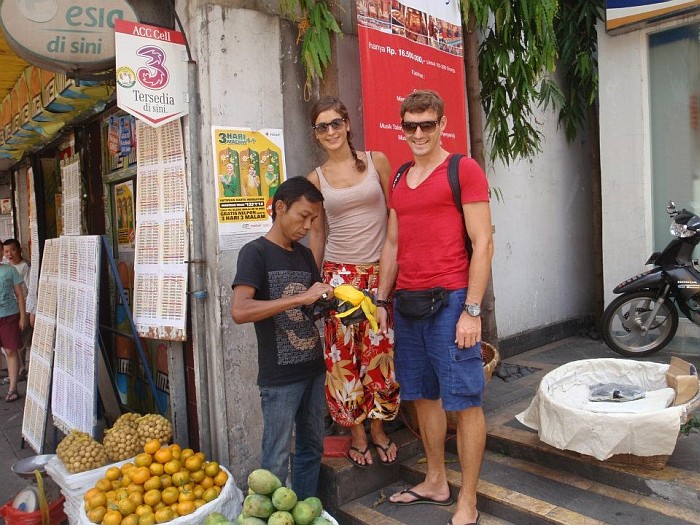
Streets of Jakarta
